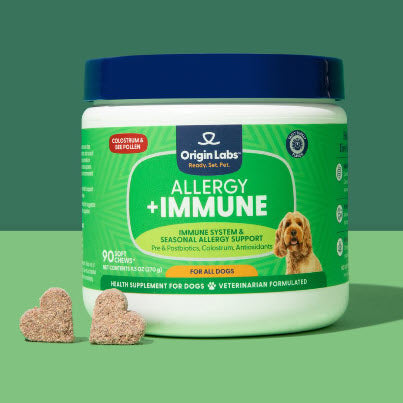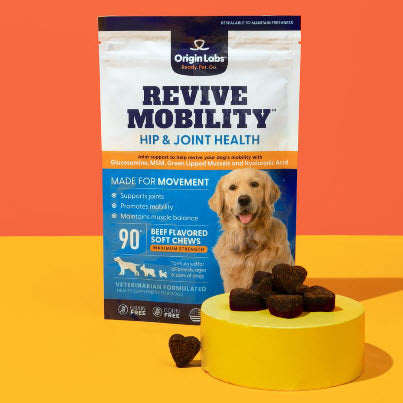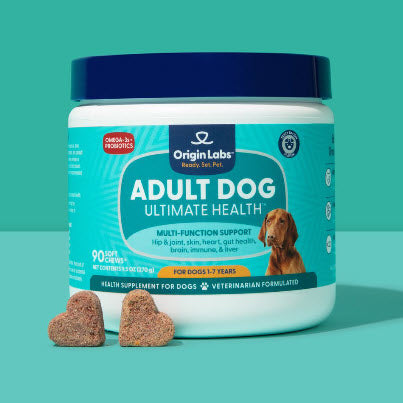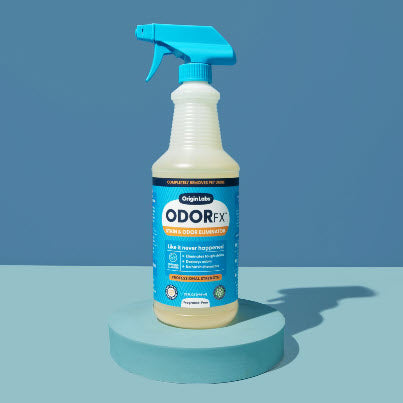Introduction
Whipped cream has become a popular treat for dogs, often offered at coffee shops like Starbucks, where it is affectionately referred to as a "Puppuccino." Pet owners enjoy seeing their furry friends delight in the creamy treat, sharing the experience of a coffee outing with their pets.
Despite its popularity, many dog owners have raised concerns about the safety of giving whipped cream to their pets. Questions around the ingredients, potential health risks, and the suitability of dairy products for dogs are common.
While dogs may enjoy the taste of whipped cream, it is essential to understand the potential risks and make informed decisions about their diet. Prioritizing your dog's long-term health and well-being should always be at the forefront when choosing treats.
For instance, considering specially formulated puppy health supplements can provide the necessary support for growing puppies. Similarly, exploring options like senior dog food with tailored hip & joint supplement can significantly support the overall health and longevity of senior dogs.
The Truth About Whipped Cream and Its Suitability for Dogs
Composition of Whipped Cream
Whipped cream is a popular dessert topping made primarily from heavy cream, sugar, and sometimes vanilla extract. The preparation involves:
- Heavy Cream: The base ingredient, providing the fluffy texture when whipped.
- Sugar: Added to sweeten the cream.
- Vanilla Extract: Occasionally included for additional flavor.
The process typically involves using a whisk or mixer to incorporate air into the mixture, resulting in a light and airy texture.
Nutritional Value of Whipped Cream for Dogs
When considering whipped cream as a treat for dogs, it's crucial to understand its nutritional content:
- High Fat Content: Whipped cream contains significant amounts of fat. While fats are essential in moderation, excessive consumption can lead to weight gain and other health issues such as pancreatitis.
- Sugars: The added sugars contribute empty calories, which can lead to obesity and dental problems in dogs.
- Lactose: Many dogs are lactose intolerant, meaning they lack the necessary enzymes to properly digest dairy products like whipped cream. This can result in gastrointestinal upset including diarrhea and gas.
The absence of essential nutrients makes whipped cream an unsuitable choice for a dog's diet. It lacks proteins, vitamins, and minerals that are critical for maintaining a dog's health.
Understanding what goes into whipped cream highlights why it might not be the best treat option. It's important to look for alternatives that provide actual nutritional benefits to your furry friend.
Understanding Dogs' Digestive System and Dietary Needs
Dogs, like humans, have unique digestive systems that determine how they process different types of food. One significant factor in understanding their dietary needs is their ability to digest dairy products, such as whipped cream.
Dogs' Ability to Digest Dairy Products
Dogs lack the enzyme lactase, which is responsible for breaking down lactose—the sugar found in milk and other dairy products. This deficiency means that many dogs are lactose intolerant, making it difficult for them to properly digest dairy products. Symptoms of lactose intolerance in dogs can include:
- Diarrhea
- Gas
- Bloating
- Abdominal discomfort
The Role of Lactose Intolerance in Dogs
Lactose intolerance varies among individual dogs. Some may tolerate small amounts of dairy without any noticeable symptoms, while others may react adversely even to minimal quantities. Knowing your dog's tolerance level is essential before introducing any dairy-based treats.
Key Points to Consider:
- Lactase Deficiency: Most adult dogs produce little to no lactase, making them less capable of digesting lactose.
- Symptoms of Intolerance: Watch for signs like diarrhea or gas after your dog consumes dairy products.
- Individual Variability: Not all dogs are equally lactose intolerant; some may handle small amounts better than others.
Understanding these aspects helps pet owners make informed decisions about including dairy in their dog's diet. While an occasional lick of whipped cream might not harm every dog, being aware of individual tolerance levels is crucial for avoiding digestive issues.
Ensuring a balanced diet tailored to the specific needs of your dog promotes long-term health and well-being, reducing the risk of dietary-related problems.
The Dangers of Xylitol and Other Harmful Ingredients
Xylitol: A Hidden Threat
Xylitol, a sugar substitute found in many sugar-free products, is particularly dangerous for dogs. Even small amounts can cause severe health issues. Here’s why xylitol poses such a threat:
Rapid Insulin Release: Ingesting xylitol triggers a rapid release of insulin in dogs, leading to a swift drop in blood sugar levels (hypoglycemia). Symptoms of hypoglycemia include:
- Lethargy
- Vomiting
- Loss of coordination
- Seizures
- Liver Damage: Beyond hypoglycemia, xylitol can also cause liver failure. This occurs because the dog's body mistakes xylitol for glucose and releases insulin to process it, damaging the liver cells.
Identifying Xylitol in Products
Xylitol can be found in various products, not just whipped cream. Dog owners should be vigilant and check labels on items like:
- Sugar-free gum
- Breath mints
- Baked goods
- Toothpaste and mouthwash
Other Harmful Ingredients to Watch Out For
While xylitol is a major concern, other ingredients commonly found in whipped cream and similar treats can also be harmful to dogs:
- Artificial Sweeteners: Besides xylitol, other artificial sweeteners can upset a dog’s digestive system or cause long-term health issues.
- High-fat Content: Whipped cream is high in fat, which can lead to pancreatitis—a painful and potentially fatal condition.
- Sugar: Excessive sugar intake contributes to obesity and dental problems in dogs.
Practical Advice for Dog Owners
To keep your furry friend safe:
- Always read ingredient labels before sharing any human food.
- Avoid giving your dog any sugar-free or artificially sweetened products.
- In case of accidental ingestion of xylitol or other harmful ingredients, contact your veterinarian immediately.
Understanding these risks helps ensure that you make informed choices about what treats are safe for your dog.
Can Dogs Have Whipped Cream Safely?
Feeding whipped cream to dogs can be done safely if approached with caution and moderation. While it's true that many dogs enjoy the creamy texture and sweet taste, it's essential to consider the potential effects of whipped cream on dogs' health.
Moderation is Key
When considering whether to give your dog a small treat of whipped cream, moderation is crucial. Here are some guidelines:
- Small Portions: Offer only a small amount, such as a teaspoon-sized serving, and monitor your dog's reaction.
- Infrequent Treats: Limit the frequency of this treat to special occasions rather than making it a regular part of their diet.
Potential Effects on Health
Whipped cream, while tasty, isn't nutritionally beneficial for dogs:
- High in Fat: The high-fat content can contribute to obesity and pancreatitis if consumed in large quantities.
- Sugar Content: Excessive sugar can lead to dental issues and weight gain.
It's important to note that different breeds may have specific dietary limitations. For instance, certain breeds like Dachshunds may be more prone to obesity-related issues. If you own a Dachshund or are curious about their dietary restrictions, you may want to learn about whether Dachshunds can eat pancakes safely.
Observing Your Dog
After giving your dog whipped cream, observe their behavior and health:
- Digestive Reactions: Look out for signs of digestive upset like diarrhea or vomiting.
- Allergic Reactions: Monitor for any allergic reactions, particularly if it's their first time trying it.
Safe Practices
For those who still wish to share this treat occasionally:
- Plain Whipped Cream: Ensure that the whipped cream is plain without added sweeteners or flavorings like xylitol.
- Homemade Options: Consider making homemade whipped cream using dog-friendly ingredients like unsweetened coconut milk.
By following these guidelines, you can offer a small indulgence without compromising your dog's health.
Healthy and Delicious Alternatives to Whipped Cream for Dogs
When it comes to treats for your furry friend, there are plenty of dog-friendly fruits, vegetables, and other ingredients that are both safe and nutritious. These options not only taste good to them but also have positive effects on their overall health.
Dog-Friendly Fruits
Fruits are an excellent choice for making your own dog treats. They're naturally sweet and packed with vitamins:
Blueberries are a nutritious and delicious fruit that humans enjoy. But have you ever wondered if dogs can eat blueberries too?
- : Rich in antioxidants, blueberries support brain health and offer a burst of flavor.
- Apples : A good source of fiber and vitamins A and C. Make sure to remove the seeds and core before serving.
- Bananas: High in potassium, bananas make a creamy treat that dogs love.
- Watermelon: Hydrating and low in calories, watermelon is perfect for hot days. Just remove the seeds and rind.
Safe Seafood for Dogs
Adding seafood to your dog's diet can give them important nutrients like omega-3 fatty acids:
- Salmon: Cooked salmon is a fantastic source of protein and healthy fats. Avoid feeding raw salmon to your dog because it may contain parasites.
- Shrimp: Low in fat, shrimp offers a good dose of vitamin B12. Remember to remove the shell, tail, and cook it thoroughly before giving it to your dog.
Nutritious Vegetables
Vegetables can be used as a great base or addition to homemade dog treats:
- Carrots: Crunchy and full of beta-carotene, carrots are excellent for dental health.
- Sweet Potatoes: Full of fiber and vitamins, sweet potatoes can be baked into chewy treats.
- Green Beans: Low in calories but high in vitamins K, C, and manganese.
Combining Ingredients
Making treats by combining these ingredients ensures variety and balanced nutrition:
- Fruit & Yogurt Bites: Mix plain, unsweetened yogurt with mashed fruits like blueberries or bananas. Freeze them in small molds for a refreshing treat.
- Salmon & Sweet Potato Cookies: Blend cooked salmon with mashed sweet potatoes. Form into small patties and bake until firm.
- Veggie Mix Snacks: Combine chopped carrots, green beans, and apple slices for a crunchy snack mix.
These alternatives provide a wide range of choices that keep your dog excited about their treats while making sure they stay healthy. Trying out different combinations can help you find out what your dog enjoys the most while also benefiting their overall well-being.
The Importance of Regular Veterinary Care and Balanced Diet
Taking care of our dogs goes beyond giving them occasional treats and love. It also means making sure they receive regular check-ups from the vet to maintain their overall health.
How Veterinarians Help Keep Dogs Healthy
Veterinarians are important partners in keeping our dogs healthy. They do this by:
- Doing Regular Check-ups: These visits help catch any potential health problems early on, so they can be treated promptly.
- Administering Vaccinations: By giving dogs their shots, vets protect them from common diseases.
- Preventing Parasites: Vets also provide treatments that prevent or control fleas, ticks, and worms in dogs.
- Taking Care of Teeth: Dental health is crucial for dogs too! Vets keep an eye on their teeth to prevent any dental issues.
- Giving Nutritional Advice: Vets can guide us on what to feed our dogs based on their specific needs.
Why a Balanced Diet Matters for Dogs
A balanced diet is essential for keeping our dogs healthy in the long run. Here's what it should include:
- Proteins for Muscles: Dogs need protein to build and maintain strong muscles.
- Healthy Fats for Energy: Good fats give dogs the energy they need and keep their skin and coat in good condition.
- Carbs for Fuel: Carbohydrates are a source of energy for dogs and provide them with important nutrients.
- Vitamins and Minerals for Body Functions: Just like us, dogs require vitamins and minerals for their bodies to work properly.
Tips for Feeding Your Dog a Balanced Diet
- Choose Good-Quality Dog Food: Look for brands that are known to have all the nutrients your dog needs.
- Check the Labels: Make sure the food meets AAFCO standards for being complete and balanced.
- Keep Human Food Away: Some human foods can be dangerous for dogs, like chocolate, grapes, and certain artificial sweeteners.
- Feed the Right Amount: Follow the recommended portions based on your dog's weight, age, and activity level.
Talk to Your Vet
Before making any changes to your dog's diet or giving them new treats, it's always best to consult with your vet first. They can help you come up with a nutrition plan that suits your dog's specific health requirements.
By combining regular vet visits with a well-balanced diet, you're setting your dog up for a lifetime of good health and happiness.
Conclusion
Feeding whipped cream to dogs might seem like a harmless treat, especially when offered at popular coffee shops. However, the potential risks associated with this indulgence make it clear that whipped cream should not become a regular part of your dog's diet.
Key Takeaways
- Potential Risks: Whipped cream contains sugars and fats that are not suitable for canine consumption. Additionally, some varieties may contain harmful ingredients such as xylitol.
- Moderation is Key: While an occasional small amount might not be immediately harmful, regular consumption can lead to health issues.
Healthier Alternatives
Prioritize your dog's long-term health by opting for safe and nutritious alternatives:
- Fresh fruits like apples (without seeds) and blueberries
- Vegetables such as carrots and green beans
- Homemade treats using dog-friendly ingredients
Ensuring your dog’s well-being involves making informed dietary choices. By avoiding whipped cream and focusing on healthier options, you contribute to their overall health and happiness.
FAQs (Frequently Asked Questions)
Can dogs have whipped cream as a treat from coffee shops?
While dogs may enjoy the taste of whipped cream, it is important to understand the potential risks and make informed decisions about their diet. It's best to avoid giving whipped cream to dogs as a regular treat.
What is whipped cream made of and how is it typically prepared?
Whipped cream is typically made of heavy cream that has been beaten until it is light and fluffy. It may also contain sugar and other flavorings.
Are dogs able to digest dairy products like whipped cream?
Many dogs are lactose intolerant, which means they have difficulty digesting dairy products like whipped cream. This can lead to digestive issues and discomfort for the dog.
What are the potential risks associated with xylitol in whipped cream?
Xylitol, a common sweetener found in some varieties of whipped cream, can be toxic to dogs. Ingesting xylitol can lead to a rapid release of insulin, resulting in low blood sugar levels and potentially causing seizures or liver failure.
Is it safe for dogs to have whipped cream in moderation?
Feeding dogs small amounts of whipped cream on occasion may not cause immediate harm, but it's important to remember that moderation is key. It's best to prioritize the long-term health and well-being of dogs by offering them safe and nutritious alternatives to whipped cream.
What are some healthy alternatives to whipped cream for dogs?
Instead of whipped cream, consider using dog-friendly fruits, safe seafood, and other nutritious ingredients to create homemade dog treats. Fruits like apples and bananas, as well as cooked salmon or tuna, can be great options for your furry friend.
Why is it important to maintain a balanced diet for overall canine health?
Feeding dogs a nutritionally balanced diet is crucial for their overall well-being. Regular check-ups with a veterinarian can also help ensure that dogs are receiving the proper care and attention they need.








